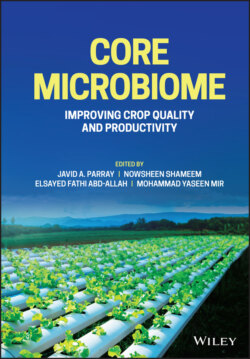Читать книгу Core Microbiome - Группа авторов - Страница 28
2.3.2.2 Parasitism
ОглавлениеParasitism is another mechanism that the endophytes use to defend their plant host. Generally, it is observed when there is an interaction between bacteria and fungi or fungi and fungi. Endophytes fight the pathogens directly and produce lyase that helps in destroying the pathogen’s cell wall. For instance, out of all the endophytes isolated from poplar, the Burkholderia cepacia complex could efficiently control Cytospora chrysosperma, Phomopsis macrospora, and Fusicoccum aesculi causative agent of poplar canker. The interaction of endophytic cotton bacteria Bacillus halotolerans (Y6) hinders spore germination in vitro along with mycelial growth of Verticillium dahlia pathogen. Mousa et al. (2016) observed that the endophyte swarmed toward the root-invading pathogen and completely covered F. graminearum hyphae by forming a biofilm that acts as a physical barrier that obstructs the passage and entraps the pathogen and is eliminated then. Thus, the bacteria construct a microhabitat of their own to invade the pathogen. Furthermore, the isolated strain can increase root hair proliferation and create a barrier to block and destroy the invaders [59].
